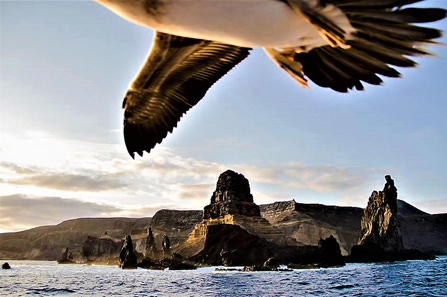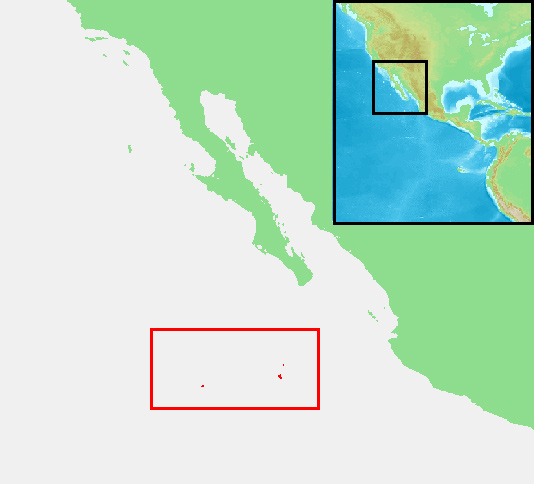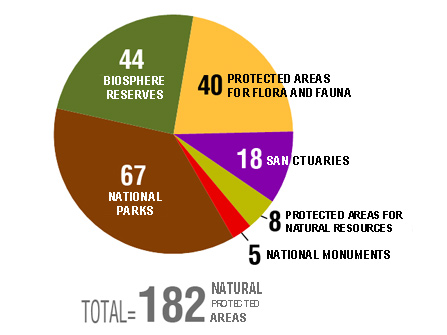Revillagigedo, a monumental task on Mexico’s Galapagos

The recent presidential decree created the largest national park in Mexico as well as a huge challenge to strengthening conservation efforts in one of world's most biodiverse regions. Click to enlarge image. (Photo: Eréndira Valle).
CABO SAN LUCAS
When Enrique Peña Nieto signed the decree on Nov. 24, 2017 that designated the Revillagigedo Islands as the country’s largest national park, he kicked off the enormous task of strengthening conservation in one of the most biodiverse zones left in the world.
The challenge now is to better manage the area that, because of its importance to the world, was designated a Biosphere Reserve in 2008. The park encompasses more than 57,170 sq. miles of ocean and only 60 sq. miles of land that includes the islands of Clarión, San Benedicto, Socorro and Roca Partida.
Known as Mexico’s Galapagos and located at the mouth of the Gulf of California, the isolated archipelago belongs to the state of Colima. A 24-hour boat ride from Cabo San Lucas, it is a favorite destination for divers.
Responsibility for the area’s protection lies with the National Commission of Protected Natural Areas (Conanp), a division of the Secretariat of the Environment and Natural Resources (Semarnat), and of the Secretary of the Navy (Semar). Conanp is tasked with administration, day to day management, and the preservation and restoration of the park’s ecosystems and features, while Semar handles inspections and carries out patrols, reconnaissance and supervision of the protected area.
Semarnat formulated the decree that was published in the Official Federal Journal on November 27th, and will coordinate inspection and supervision activities within the park, in which the Federal Attorney General’s Office for Environmental Protection (PROFEPA) will also be involved, at the same time that it will reach out to other agencies for assistance as necessary.

Often referred to as "Mexico's Galapagos", the archipelago at the mouth of the Gulf of California is a favorite destination for divers who access the islands from Cabo San Lucas. Click to enlarge image. (Map: Wikipedia).
The conservation world applauded the decision; environmental organizations and media outlets have spread the word about the wealth of marine life that characterizes the new park, and some of these materials are available on the Melóncoyote Facebook page.
Highlighting the area’s marine life, scenic beauty and the federal authorities’ lack of resources for carrying out their job – this leaves Revillagigedo National Park primarily at the mercy of tuna, shark, and aquarium fish poachers.
Both Semarnat and Conanp have had major budget reductions, and the amount allotted is not much to begin with. In 2017, Semarnat received 37.4 percent less than in 2016, which was 20 percent less than the previous year, when there was only a 1.1 percent decrease.
According to an analysis by Fundar, a non-governmental organization, Conanp saw its 2014 budget rise by 4.4 percent from the previous year; in 2015, it decreased 1.35 percent, and while it rose again by 10.9 percent in 2106, it was cut again by 21.7 percent in 2017.
The budget approved for Conanp in 2018 is about US$1.98 million, about half of what was received in 2015, while the territory of all categories of Protected Natural Areas (ANPs) has increased, as have the threats from extractive activities within their borders.
Profepa’s situation is similar in that it lacks sufficient money, human resources and materials to efficiently carry out monitoring across the country. “It’s not that they are doing a bad job, it’s that they lack the resources to confront the problem, they need more people, more resources and a strengthening of the laws and regulations”, Julia Carabias Lilo, former director of Semarnat, told the newspaper El Universal.
The winner of the 2017 Belisario Domínguez Medal acknowledged that because Profepa has very little money and staff, it can’t address all of the country’s problems and what it needs is a strengthening of the regulations that will help with prosecutions.
The problem doesn’t only stem from the lack of resources, but from its structural nature, which under the current circumstances puts environmental defenders and institutions at grave risk: organized crime has become involved in natural spaces, “communities are threatened, there is plundering and over-exploitation of the fisheries and they go around intimidating authorities and activists.”
“If the rule of law was working, if we really had good monitoring, if it all led to the sanctions that the law permits, then we would all be much less vulnerable,” Carabias stressed.
Revillagigedo’s distance from Mexico’s mainland makes it even more difficult to care for, protect, and preserve its natural resources. Activities prohibited in the zone are:
- Construction of infrastructure for any tourism activities as well as their support services;
- Dumping or discharging contaminants on land or into the water, or developing activities that produce contaminants;
- Changes to land use;
- Disrupting, filling, transplanting, pruning or engaging in any other work or activity that would affect the integral nature of any water course or source, including its natural productivity and capacity to replenish ecosystems;
- Interrupting, filling, draining, redirecting or otherwise modifying runoff watersheds and water flow;
- Hunting marine mammals;
- Harvesting any species or populations of wild flora and fauna;
- The introduction of exotic and invasive species or populations of plants and animals, soil from other islands or the mainland, and genetically modified organisms in order to carry out any type of activity within the protected area;
- Disturbing or destroying the feeding, refuge or nesting grounds of any wild species;
- Removal of, or damage to, the chimneys and rocks of the hydrothermal vents and hydrothermal areas;
- Trawling or use of any other invasive technique that disturbs the sea floor;
- Use of temporary or permanent night-time lighting that impacts the natural behavior of any wildlife;
- Use of any sound source that impacts wildlife behavior;
- Use of explosives;
- Campfires or any type of fire on the islands;
- Creating paths, openings or roads;
- Dredging or disturbing the sea floor in any way that results in suspended sediments or creates muddy areas;
- Mining exploration or extraction;
- Any other activities as prohibited by the General Law of Ecological Balance and Protection of the Environment.
The task is monumental, and it’s only just begun.

